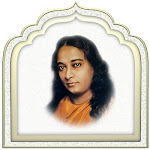Studies shows that people who have a spiritual practice tend to live longer, recover faster from illness, and experience less distress in the face of calamity. In a recent well-researched and thoughtful book, God, Faith, and Health: Exploring the Spirituality-Healing Connections(John Wiley & Sons, 2001), epidemiologist Jeff Levin, Ph.D., has laid out seven pathways by which "religious or spiritual affiliation" may lead to better health.
1. Healthy lifestyle and social support
There is evidence that religious people may live longer because they are better stewards of their bodies. For example, many religious teachings discourage the consumption of alcohol, tobacco, meat, and drugs, all of which can endanger health. Religious people also tend to have more friends and stronger community. Social support is known to contribute to health.
2. Spiritual Practice
Practices such as prayer and meditation have been shown to improve health by promoting physiologic relaxation and strengthening the immune system.
3. Personality
Many religions prescribe attitudes and ways of relating to others that promote health. For example, most religions teach forgiveness, compassion, and peaceful comportment, which directly promote health. Practitioners who release anger and forgive or be helpful are likely to have decreased blood pressure, increased immune function.
4. Cognitive style
Religions teach faith, hope, and optimism, all of which are associated with better medical outcomes.
5. Mystical experience
Mystical experiences may occur with spiritual practices such as prolonged prayer, chanting or meditation These experiences may activate bio energy or life force that promotes natural, innate healing.
6. Supernatural force or intervention
There is a principle that is neither physical, emotional, nor mental, which is, nevertheless, the source of our aliveness and experience. Whatever this force might be, mounting evidence from studies at Duke, Columbia, the Mid-America Heart Institute suggests that an efficacy to healing intention or prayer separate from healthy lifestyle, social support, personality, spiritual practice, cognitive style or even altered states. Thus one way spirituality heals - is spiritual.
"During the past thirty years, people from all civilized countries on earth have consulted me. Among all my patients in the second of half of life - that is to say, over thirty-five - there has not been one whose problem in the last resort was not that of finding a religious outlook on life. It is safe to say that even one of them fell ill because he had lost that which the living religions of every age have given to their followers and none of them has been really healed who did not regain his religious outlook." - Carl Jung
Source: Self-Realization Fellowship Magazine, Winter 2002
1. Healthy lifestyle and social support
There is evidence that religious people may live longer because they are better stewards of their bodies. For example, many religious teachings discourage the consumption of alcohol, tobacco, meat, and drugs, all of which can endanger health. Religious people also tend to have more friends and stronger community. Social support is known to contribute to health.
2. Spiritual Practice
Practices such as prayer and meditation have been shown to improve health by promoting physiologic relaxation and strengthening the immune system.
3. Personality
Many religions prescribe attitudes and ways of relating to others that promote health. For example, most religions teach forgiveness, compassion, and peaceful comportment, which directly promote health. Practitioners who release anger and forgive or be helpful are likely to have decreased blood pressure, increased immune function.
4. Cognitive style
Religions teach faith, hope, and optimism, all of which are associated with better medical outcomes.
5. Mystical experience
Mystical experiences may occur with spiritual practices such as prolonged prayer, chanting or meditation These experiences may activate bio energy or life force that promotes natural, innate healing.
6. Supernatural force or intervention
There is a principle that is neither physical, emotional, nor mental, which is, nevertheless, the source of our aliveness and experience. Whatever this force might be, mounting evidence from studies at Duke, Columbia, the Mid-America Heart Institute suggests that an efficacy to healing intention or prayer separate from healthy lifestyle, social support, personality, spiritual practice, cognitive style or even altered states. Thus one way spirituality heals - is spiritual.
"During the past thirty years, people from all civilized countries on earth have consulted me. Among all my patients in the second of half of life - that is to say, over thirty-five - there has not been one whose problem in the last resort was not that of finding a religious outlook on life. It is safe to say that even one of them fell ill because he had lost that which the living religions of every age have given to their followers and none of them has been really healed who did not regain his religious outlook." - Carl Jung
Source: Self-Realization Fellowship Magazine, Winter 2002




























